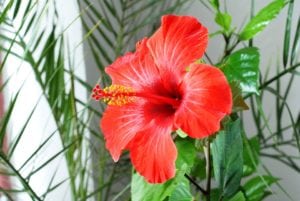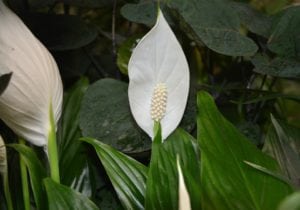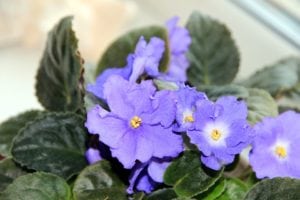
Image credit: bstad
You do not need to live outside the city to get a flower garden. Live plants in the apartment make the room more cozy, saturate the air with oxygen, clean the building from negative energy, and just enjoy our appearance.
Houseplants, with which we decorate our homes, carry not only beauty, but also special energy. Someone feels it subconsciously, particularly sensitive can detect certain “fluids”. Of course, I want the energy of plants, which we cultivate, bringing to our homes, corresponded to ours. And that plants in gratitude for our love and care made us happy.
If the energy of the plant perfectly matches the energy of the hosts, this multiplies the positive. But there are plants with universal energy that care about the happiness of absolutely everyone. And here is the question: if there are “happy” plants, then there must be “unhappy”, that is, those that are undesirable in the house? Indeed, some have earned dubious fame. But “who is who” in our home green nursery, and are plants really capable of changing the environment?
It was bad – it became good!

Image credit: PublicDomainPictures
A happy plant for the house is the Dracaena braunii. This plant, very similar to bamboo, is even called “Lucky Bamboo”. They say that it draws energy into the house, which is capable of transforming the negative into a positive. Happy bamboo is very unpretentious: it can grow both in soil (loose) and simply in water. With the ground is easier – care for the plant is exactly the same as for all dracenas. If the bamboo of happiness grows in a flask or vase, the water should be changed every two weeks. Do not forget that there are not many nutrients in the water itself, so when replacing water from time to time, add a little complex mineral fertilizer to it. In the store you can buy the original twigs of the dracena – twisted in a spiral. But you can grow such a “spiral” and yourself. To do this, you need to fix a transparent tall glass (tie) on the shoot and turn the bowl more often, so that the growing branch stretches to the sun. But the bright sun the happy bamboo, like all the dracenes, does not like – it feels better in the penumbra, with diffused light.
Female and man’s happiness

Image credit: JACLOU-DL
A plant that promotes female happiness is considered to be spathiphyllum. It is believed that he is responsible for the fact that the woman was not alone. Energy of this plant is quite strong: to settle a quarrel or to transfer relations from the category of uncertain to warm, trusting, partner – its task. Spathiphyllum is a “moderate” flower; in everything it prefers the golden mean: in watering, lighting, feeding, temperature of content.
A plant that cares about the happiness of a man is an anturium. In principle, it performs all the same tasks that the woman spathiphyllum performs. But in the care they are very different: if spathiphyllum is content with small, then it is necessary to look after the anthurium as a man: it is good to feed, drink abundantly, keep warm. Only in this case the anthurium will be pleased with the flowers for a long time, and also fulfill its mission to ensure a happy man’s residence in the house.
Flowers of happy love
Colors specializing in happy love are considered to be oxalis and hibiscus. Oxalis has decorative leaves that resemble the wings of a large butterfly (the wings of love). In the evening, the flower adds up its “wings”, and in the morning it straightens. His flowers are modest, and the plant itself is not very impressive, but in this modesty a great power is hidden: it is said that oxalis can evoke a feeling of love for the one from whom you expect it. Caring for an oxalis is easy – watering as the soil dries up and moderate fertilizing.
Hibiscus, in contrast to the oxalis, is very effective. And it acts directly, causing not even feelings, but passion. The most important requirement, which he puts forward with regard to care, is more sun! If this requirement is met by putting a pot on the southern sill, this plant can bloom from the end of winter and until the beginning of the next one.
To plants that promote happiness in love, belongs to the avocado. Neither bloom nor bear fruit at home avocados will not, but for a couple of years from the stone will grow into a pretty tree that resembles a laurel (avocado belongs to the laurel family). Conditions that the avocado prefers: warm, sunny, humid. It is best to put a container with this plant in a pallet with pebbles and often pour water into it.
Plants for Family Happiness

Image credit: zoosnow
It is believed that family felicity produces ficus, chlorophytum, senpolia (umbilical violet). These are plants that have such a quiet energy, that in it irritation, anger, arguments and quarrels simply “drown”. Fortunately, these plants are unpretentious, especially chlorophytum and senpolia. They can grow in the shade and in the sun, take long breaks in watering, do not protest, if at all do not feed (although with feeding, of course, develop better). Ficuses are more demanding, but it also depends on the species. General conditions for successful cultivation: warmth, moderation in watering (roots of ficuses from waterlogging rot), absence of drafts.
Cactus – provocateurs or guards

Image credit: ulleo
The main superstition associated with Cactus is that they can provoke a husband’s drunkenness.
There are believers in the fact that Cactus can not be kept in the bedroom – they will “kill” sexual passion. This is unlikely – if there is a passion, no cactus will scare her. Although you can take Cactus out of the bedroom – just in case. By the way, and check.
Cactus are also noticed in good deeds: for example, it is believed that the house where Cactus grows, robbers bypass.
Any house plant in the house can be grown – if only you liked it. By the way, this harmless “like-dislike” is an excellent indicator. If you feel admiration or tenderness, looking at the plant, it is yours, since your energy sectors coincide. If, when looking at a plant, you feel doubt or, worse, rejection – it is best that you stay away from each other.
